Ecommerce, or electronic commerce, is something that’s hard to escape these days. You might be engaging in ecommerce on a daily basis without really realizing it, which speaks volumes as to just how well modern society has adopted it as a technology.
Granted, the proliferation of ecommerce can vary from region to region, but with the increasing global coverage of telecommunication networks and prevalence of smartphones, ecommerce is only likely to become even more powerful as 2024 ticks by.
So, what is ecommerce, when did it become such a big deal, and how can you pick up your share of the pie? In this article, we’ll take a deep dive into ecommerce, look at how it really works, and how you can start your own ecommerce business!
If you're looking for a particular piece of ecommerce information, click through to jump to:
- What is Ecommerce?
- The History of Ecommerce
- The Ecommerce Landscape in 2024
- Types of Ecommerce
- Ecommerce Revenue Models
- Ecommerce Business Examples
- Pros of Ecommerce Businesses
- Cons of Ecommerce Businesses
- How to Start an Ecommerce Business in 8 steps
- Join the Ecommerce Revolution Today with Whop!
- Frequently Asked Questions
What is Ecommerce?
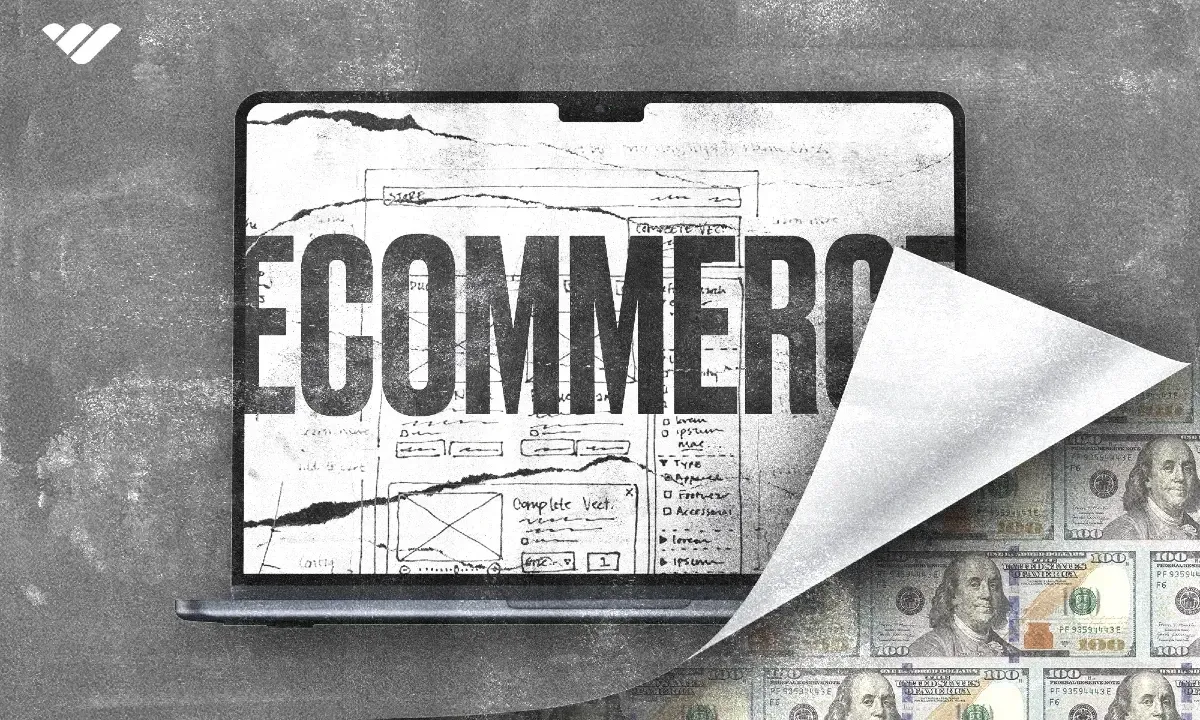
Ecommerce broadly refers to the transaction of goods and services via the internet, conducted across a variety of devices, geographical locations, and product categories. Buying a book online counts as ecommerce, and so does registering for and using a stock brokerage account.
To be considered ecommerce, multiple parties are needed—at the bare minimum, a buyer and a seller. There’s also the need to transfer data as well as a currency to process the transaction, since no sale is truly complete until money changes hands.
The History of Ecommerce
Ecommerce may feel like a new concept, but we’re almost into our fourth decade of online sales. According to the New York Times, the first-ever online retail transaction dates back to August 1994, involving the sale of a Sting CD between friends via an online retail site called NetMarket.
NetMarket has been through several evolutions since but isn’t as big of a brand name anymore and Sting’s still doing musical gigs but isn’t quite as prolific nowadays. Compact Discs are long gone. Online transactions and ecommerce, on the other hand, have taken over the world.
In the thirty years between that first online CD sale and today’s ecommerce-driven global market, there’s been plenty of innovation, iteration, and frantic development. The brick-and-mortar industry has had to adapt, and previously dominant shopping models such as catalogs have all but disappeared.
NetMarket, on the back of that first CD sale, hit $1 billion in sales four years later with a varied inventory of retail goods. What not many knew at the time, though, was the fact that something even bigger had happened around the time of that first transaction—just a month previous, a certain Jeff Bezos was busy founding his online bookstore.
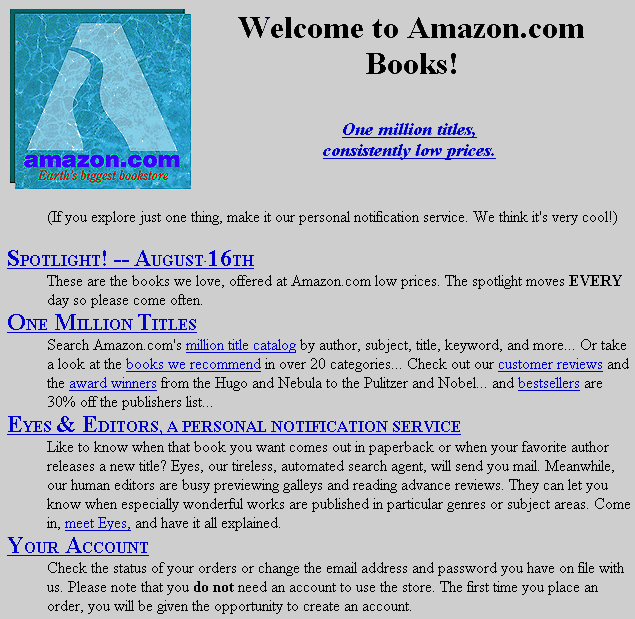
While NetMarket was busy raking in $1 billion in 1998, Amazon had just added music and videos to its online store. Then came video games, software, consumer electronics, home improvement items, and toys.
As Amazon was expanding, a former English teacher from Hangzhou set up a company called Alibaba. Another company called eBay was hitting its stride at this time too, recording half a billion dollars in revenue in just the first quarter of 1999. Marking just how big the internet was getting at this time, Yahoo bought both Geocities and Broadcast.com in that same year for a combined $9.3 billion.
The widespread adoption of the internet was lapped up by Wall Street, and the result was inevitable—the dot-com crash of the early 2000’s wiped out all the gains and also plenty of livelihoods, and many online shopping companies were swept away.
Almost all online retailers lost market capitalization in the crash, but not all were brought down by Wall Street. 48% of dot-com companies survived, and the strongest started to prosper. Online shopping itself wasn’t going anywhere, and the top ecommerce firms were well on their way to becoming corporate juggernauts and pillars of the modern economy.
Perhaps most notably of all, more ecommerce business models were starting to hit the mainstream. Platforms like eBay were always based on P2P commerce, but others such as Shopify, WooCommerce and Squarespace were giving individual entrepreneurs the chance to become merchants.
The Ecommerce Landscape in 2024
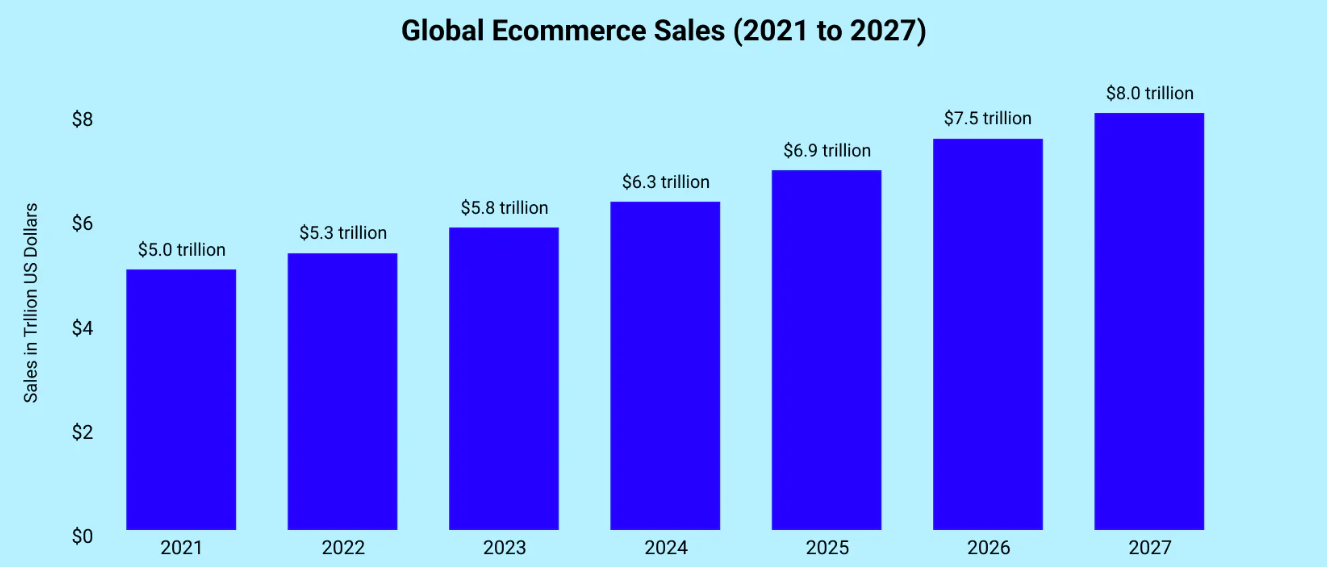
Today, ecommerce is estimated to be a $6.3 trillion market, led by China with over $3 trillion in total online sales globally. This figure is startling because it marks a 9.4% forecast growth rate, which is almost double the forecast 4.9% growth of total retail sales worldwide.
The total retail market is far bigger at $31.1 trillion, but the trend data is clear—more and more people are doing their shopping online versus at a store or in a mall. Retail isn’t going away anytime soon, but ecommerce is chipping away at its share of people’s wallets, and effects of it are already being felt in stressed areas like commercial real estate.
Ecommerce is also booming in emerging markets, with eMarketer reporting over 20% ecommerce sales growth for 2023 in countries such as Indonesia, Philippines, and the world’s most populous country, India.
It’s notable that the Coronavirus pandemic, which put almost every part of the world into lockdown at one time or the other, has been a big contributor toward the continuous rise of ecommerce. US ecommerce sales surged 33.5% in the second quarter of 2020 alone, while retail sales dipped 3.5%. This is largely because it was possible to have practically every necessary good (and plenty of luxuries) delivered in order to live as normal a life as possible while adhering to the demands of minimal social contact and self-isolation. Plenty of consumers were woken up to a world of convenience and they’ve stuck with online ordering post-pandemic, while companies (from major outlets to SMEs) had to innovate fast or risk going bust.
As a result, ecommerce platform usage has also exploded, with some platforms hosting thousands or even millions of merchants. WooCommerce is one of the leaders in this area with over 4.5 million vendors, but Whop is one of the fastest-growing at 10,000+ merchants and over $279 million in sales processed.

These platforms provide all of the support services entrepreneurs need in order to run an ecommerce business, meaning that all they need to do is have a product. This translates to a minimal (and shrinking) barrier to entry, which can only help ecommerce grow even further.
Types of Ecommerce
We’ve mentioned a lot of different ecommerce firms and touched on how the business models they use can change, so let’s run through the main types of ecommerce business model you’re likely to come across:
B2C
If there were a “traditional” model for business in general, this would be it. B2C stands for business to consumer, so you’re looking at a business selling goods and services to an individual consumer. A clothing brand that has an outlet in the mall or a website you can buy from would be an easy example, since the brand is a business and all of their customers are usually individual consumers.
B2B
B2B stands for business to business, and it’s when a company sells goods or services to other companies. Using our previous clothing brand example, you can take a couple of steps back in the supply chain to find B2B companies like clothing manufacturers or logistics providers that all do their part in order to get those clothes into distribution warehouses and retail shelves.
C2C
C2C means consumer to consumer, but we’ve got to be careful when defining this one. If you’ve got an old music CD lying around that you sell on a digital marketplace, that’s C2C. If you’ve got a guy who knows a guy and start selling lots of used music CDs, you’re a reseller, and it’s more accurate to describe that as B2C.
C2B
C2B, as you’ve probably guessed by now, means consumer to business. This one’s a little harder to imagine because it’s not quite as prevalent, so look toward the content creation industry if you want easy examples. If you’re a blogger or YouTuber who picks up a piece of sponsored content or gets paid to promote a product, that’s C2B.
Ecommerce Revenue Models

While it’s good to know all about the different types of ecommerce business models out there, the available revenue models may be even more important. Whoever your customer is, you always want to monetize effectively! So, here are some revenue models to consider if you’re thinking about starting an ecommerce business.
Sales
We’re starting off traditional again, because you’ll see this one all the time—a company will attach a price to a product, and ownership of the product is transferred to the customer when they complete the purchase. It’s usually a one-time fee, and while there may be terms such as guarantees and customer service included with the contract, there aren’t any major strings attached. Dropshipping is an excellent example of the sales model.
Licensing
Similar to sales, but here you’re charging a one-time fee to allow a customer to use your product rather than transferring ownership of it. It’s a model generally used in areas such as software–it’d be silly to license out a pair of socks–although certain industries such as platform-based digitally downloaded media have gotten into hot water with consumers after claiming that they’re licensing rather than selling. Revoking a consumer’s ability to watch a movie or play a game they paid top dollar for may not be a popular decision.
Affiliates
If you’ve got an audience rather than a product of your own, affiliate marketing may be a great revenue model for you. If you review books, for example, you can provide your audience with an affiliate link or a coupon code that they use to purchase the product from the publisher’s website. You’ll then earn a commission, much like a salesperson, although with coupons it’s also common for the publisher (in this example, it could be any sort of brand or seller) to attach a discount to the coupon code in order to increase the likelihood of a sale even further.
Subscription
The subscription model seems to be all anyone talks about these days, and that’s because it provides recurring revenue. It’s far better for your cash flow than one-and-done sales and more likely an easier pill to swallow for your customers (would you pay $10 per month, or $120 right now? Easy choice). Subscriptions do however put greater emphasis on areas like customer support and communication with the goal of maximizing retention, so they can really change the way you do business. If you’re an influencer selling memberships you’re also using subscriptions, but the onus is on you to provide value worth paying for.
Donation
The donation model is another one used by influencers, and you’ll encounter it especially when you watch creators live stream. The system works in different ways depending on the platform, such as Twitter’s Live Gifts and YouTube’s Supers, but this model can work for you if you’re providing live content to an appreciative audience. You’re usually expected to give someone a shout-out or read out their comment if they make a donation, but mileage can vary.
Advertising
Like the affiliate model, advertising is a good one if you’re building a personal brand or your own audience. Picking up deals to create sponsored content, talk about certain products, or even become a brand ambassador all count as variations of the advertising revenue model.
Transaction Fee
The transaction fee model tends to be used by firms that process transactions, so you don’t need to worry about this one unless you’re in that domain. If you are, though, this can be extremely effective to deploy but you need to be careful about how you do it. Most companies use either a percentage fee, a flat fee, or a combination of the two, but they’re all very aware of what their sellers need. If a vendor is selling cheap products a flat fee will hurt them, but a customer selling high-priced products would prefer that same flat fee to a high percentage fee.
Ecommerce Business Examples
We’ve already mentioned several examples of ecommerce businesses, but it’s worth taking a look at how a few household names have stood out by leveraging different ecommerce models and tactics.
Amazon

As the biggest ecommerce company in the world at a market cap of over $1.8 trillion, Amazon bears mentioning yet again. From starting life as an online bookstore to a megacorp that sells just about anything under the sun, Amazon is probably the first brand name that comes to mind in the world of ecommerce. It remains a great example of innovation in terms of fulfillment, with entire networks of distribution centers across the globe.
Aside from being the top name in ecommerce, a trip through any Amazon category reveals just how much it has enabled dropshipping as a business model for other merchants.
MercadoLibre
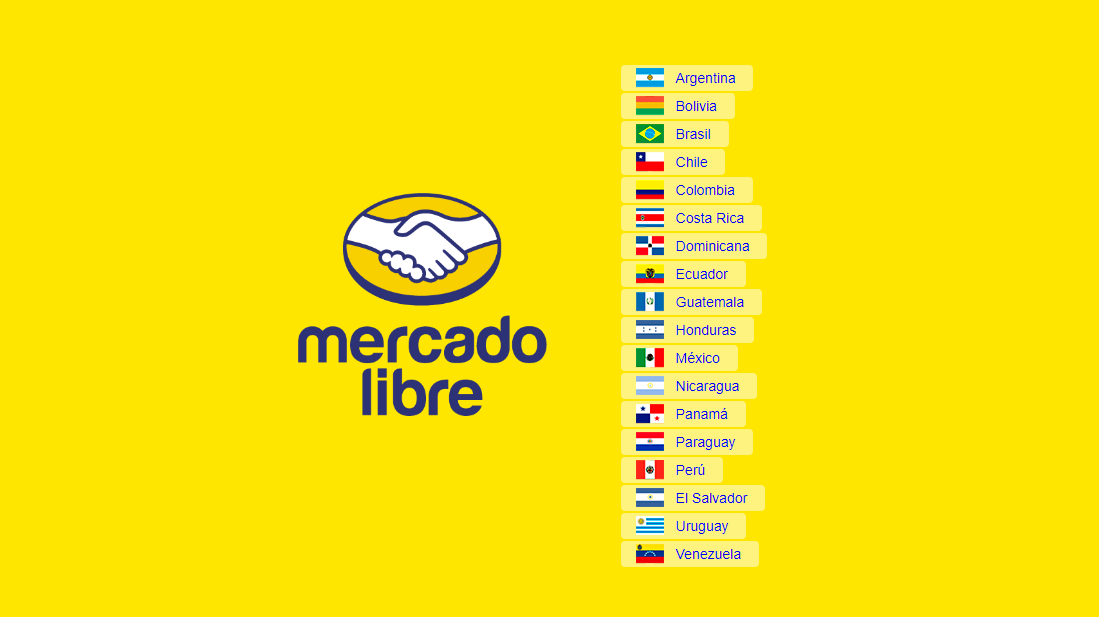
One of Latin America’s biggest names, MercadoLibre is an ecommerce platform for both third- and first-party sales. The company also provides shipping services through Mercado Envios, financial services via Mercado Pago, and even loans through Mercado Credito. This makes it an all-in-one platform for ecommerce, and the company is a multibillion-dollar success with plenty of head-room for growth given the region’s expanding middle class and comparative under-penetration of ecommerce.
Netflix

Netflix is a household name now, but it was actually founded all the way back in 1997. Its now-ubiquitous subscription revenue model went into force in ‘99, although movies and shows were mailed to customers in DVD form back then. Netflix began offering streaming in 2007, and never looked back. By 2016, customers could stream Netflix from over 190 countries, each one providing the company with that lucrative recurring revenue.
GameStop

GameStop is usually thought of as a brick-and-mortar store, but it’s worth mentioning in this list because of its turnaround story and current transformation. Having survived Wall Street short-selling attacks of questionable legality (here’s the SEC report on what happened) GameStop was able to build a zero-debt financial base and invest in transformation.
Now, although you can still pop into a store or queue for a new release like the folks in the above photo, GameStop’s US website sells just about anything and everything related to gaming. PC enthusiasts can order all of their parts on GameStop now, protected by the company’s stellar reputation for customer service—and best of all, the GameStop online store offers same day delivery, filling customers’ need for instant gratification.
Whop
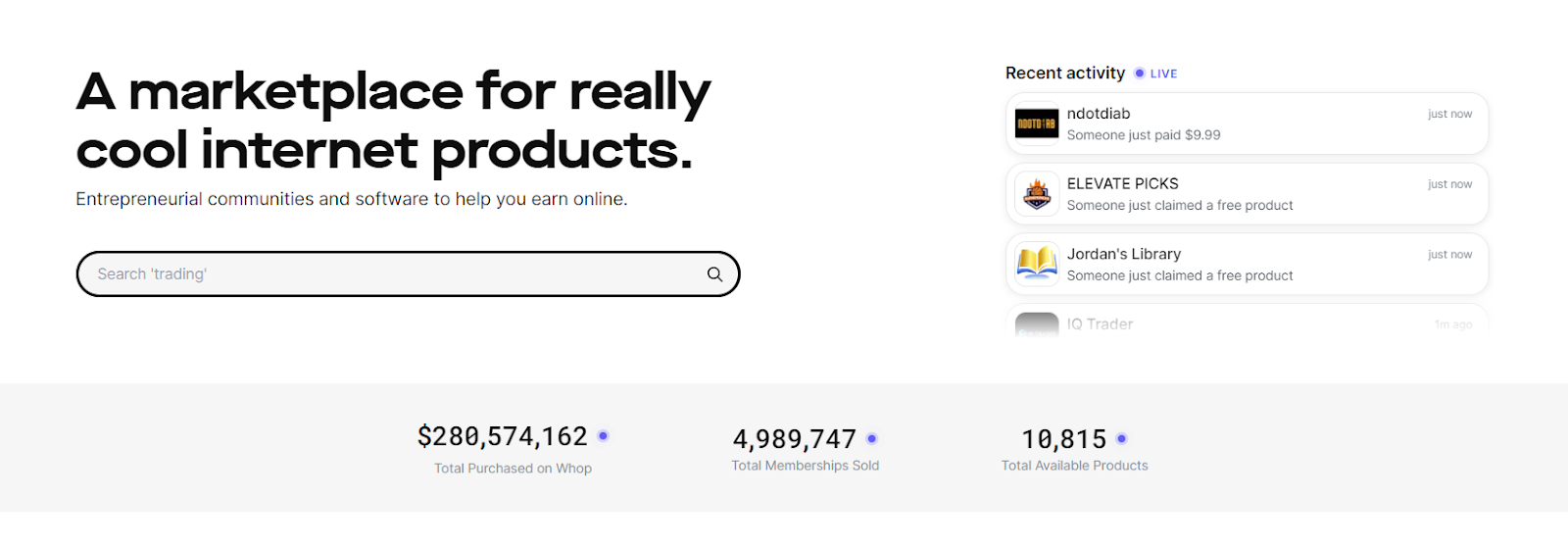
Whop is a digital marketplace providing an entire suite of services for entrepreneurs of all kinds. In a similar bucket as brands like Shopify and Squarespace, Whop lets you create an online store in minutes, listing just about any kind of digital product. Whop is the future of ecommerce, allowing creators to sell all kinds of digital products, from courses to software, eBooks, access to apps or websites, communities, and more —so if you’re in areas like SaaS, content creation, or trading, Whop is for you.
Pros of Ecommerce Businesses
So, why exactly should you run an ecommerce venture? Here are a list of benefits that might help you decide to take the plunge:
Global Market
Deciding to start a physical store can be a huge call, since when all’s said and done, you might actually misread your chosen location completely and struggle simply because you’re not in the right spot for your target market. There’s no such problem with ecommerce since just about anyone with an internet connection will be able to visit your online store.
Granted, you’ll need to list on the right sort of marketplace and make sure that your marketing and SEO are in order to reach your customers in the first place, but from then on location plays no real role until the fulfillment stage.
Convenience
We’ve touched on this already, but a lot of previous shop-goers are now all-in on online shopping purely due to the convenience of being able to order and pay online, then simply collect all of their items at their own front door. That’s not even mentioning people who have anxiety issues or agoraphobia, to whom ecommerce and online shopping is far preferable to a trip to the mall. Ecommerce is also a 24/7 thing, allowing people to shop whenever (and from wherever, thanks to smartphones) they want.
Entry Barriers
Looking at ecommerce from the perspective of an entrepreneur, it’s a whole lot easier to get the ball rolling than with practically any other form of business. With ecommerce, all you need to do to get started is to visit the appropriate platform or marketplace and get yourself registered. Just look at Whop—all it takes is a few minutes to get your store up and running!

Startup Costs
The need for significant startup capital is one of the biggest issues when it comes to starting a traditional business, and it’s the raison d’etre of hit TV shows like Shark Tank. With ecommerce, there’s no real need to sell yourself (and half your company!) to a VC—you can generally get going for free. Businesses like reselling or dropshipping might need a certain level of investment to get in, but it’s nowhere near what you’d need for brick-and-mortar.
The Data Revolution
With retail, store design counts for a lot. Making changes to your business based on your customers’ behavior can be tricky, and you’ll need to invest in quite a bit of research in this regard. Store observation, secret shoppers, focus groups, surveys—it can all work, but it’s not done as quickly as you might like. Ecommerce, however, is powered by analytics and data. You can make data-driven decisions with confidence, and better yet, you can set up your website or online store with bespoke or personalized shopping experiences tailored to individual visitors.
Cons of Ecommerce Businesses
While there are plenty of benefits to running an online business, challenges and pitfalls also come with the territory. Let’s take a look at a few things to be wary of:
Fulfillment
One of the biggest challenges when it comes to running a business selling products to customers is fulfillment, or what happens after they place an order. You’ll need to have things sorted on the payment front, and then it’s a matter of getting the products to the customer—physical products are famously challenging, and social media is full of stories of deliveries gone wrong.
Digital product fulfillment tends to be a little bit simpler, and you can dodge a lot of the main pitfalls by signing up with a good platform or digital marketplace.
Returns and Refunds
Running into issues like returns and refunds is normal for any business, but you need to get ahead of the curve and ensure that you’re covered by both your policy framework as well as an efficient, effective customer service framework. Good customer service can ensure that your business enjoys smooth sailing, and you can turn inquiries into opportunities if you do it right. At the end of the day, though, a refund isn’t the end of the world—but excessive chargebacks might be.
Safety and Security
Ensuring that customers personal and financial information is safe is paramount when doing business, and ecommerce is no different. Your website or online store will need secure payment gateways and other security measures including SSL certificates in order to stay compliant and keep your customers feeling safe—if they don’t trust your checkout page, they’re not going to make a purchase.
Instant Gratification
Or, the lack thereof. While this is changing (as detailed above in the Examples section) ecommerce generally means that customers have to wait for their products, especially in the case of niche or rare items. Even in the case of food DoorDash’ed or Uber’ed to you, it’s not quite the same as sneaking a piping hot bite as you pull out of the parking lot (and there’s also the chance that your delivery driver does that instead!)
How to Start an Ecommerce Business in 8 steps
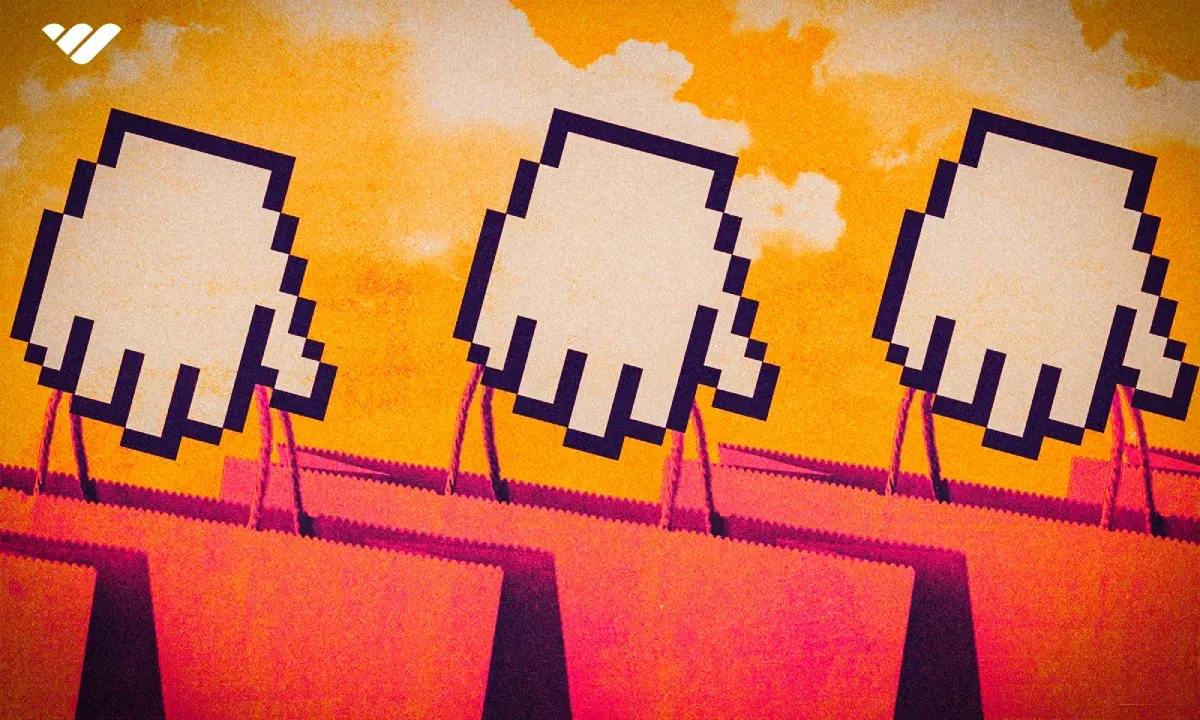
So, now that you know all about ecommerce, the benefits to take advantage of and the challenges to watch out for, and even some great role models in the business, it’s time to plot out your own path forward.
#1. Find Your Niche
If you don’t already have a solid idea or a product to sell, this is where you need to start. Many successful entrepreneurs turn a job into a business, others are able to monetize their passion—content creation is a fantastic example of how people passionate about often very niche things can build a brand and a business. Your niche may be selling seasonal products online, or it could be selling products created through crowdfunding. There's a niche for everyone - here’s a guide to finding and choosing a business idea if you need a little inspiration!
#2. Research the Market
Once you’ve picked your niche, you’ll need to do as much research as possible. Try and get a good feel of the market, which other brands or companies are also active there, and how they do business. You might be able to spot gaps in the market to take advantage of, or realize that there’s something that your eventual competition can’t provide but you can. Through thorough research, you’ll build both an understanding of how to proceed as well as your USP.
#3. Write a Business Plan
Depending on how you want to tackle starting a business, this might be useful. It’s a traditional thing to do, and will be needed if you’re going to seek funding or business partners to get started—if you want any sort of support from anyone else, it’s highly likely that they’ll ask you about your business plan. That said, you can absolutely skip this step if your business idea is something like content creation. With some businesses, you can skip straight to the action.
#4. Develop your Brand
This one’s important, because not only is it something you’ll need to sort out early on, it’s also hard to change going forward. Sit down and think about your brand, what it’s going to look like, and what you stand for. Even choosing a store or profile name is a big decision, and you don’t want to get stuck using a placeholder for too long. You can refine and develop your brand later, but you’ll want to define and establish it right now.
#5. Set Up Your Online Store
This is where you’re going to really get the ball rolling. Since you’ve already sorted your branding, you can set up your storefront along those lines—and by storefront, we’re talking about the front face of your business. If your idea is to start a YouTube channel, you’ll need to get set up, upload your logo and banner, and start making things look good. If you’re going to sell physical or digital products, you should already have researched and identified the best marketplaces to set your store up on. Whop, for example, is the marketplace of choice for many of today’s top digital entrepreneurs.
#6. Configure Shipping
Once your store’s up, you’ll also need to figure out your fulfillment processes. Whop can take care of this if your business and products are purely digital, but if you’re doing something like dropshipping or print-on-demand, you’ll have to figure out every step of the chain before even thinking of launching your store.
#7. Market Your Brand
At this stage, you should also consider the marketing side of your ecommerce business. Goal-setting is key, and so is identifying the right channels to use. There are likely far too many marketing options for you to use than available budget at this stage, so be judicious, and use channels that offer plenty of bang for your buck.
#8. Launch Your Store!
Congratulations, you’re ready for lift-off! Once you’ve found your niche and researched the market, then established your brand, sorted out marketing, lined up your supply chain, and found a great digital marketplace, all that remains is to set your store to Live and start doing business!
Join the Ecommerce Revolution Today with Whop!
Ecommerce isn’t a new phenomenon any longer, but it’s still got plenty of room to grow given that it still trails the retail sector in 2024. While it’s likely that neither sector will truly sink the other, ecommerce is growing at a much faster rate, and offers significant potential across both the near and long term.
For that reason, you might be missing out if you don’t make yourself part of the ecommerce revolution in 2024. Whether or not you’ve already got a business idea, something to sell, or knowledge to share, there’s plenty of room for more internet entrepreneurs as ecommerce continues to boom.
So, make sure you check out Whop! Whether it’s a digital storefront that you need or a platform to host courses, memberships, subscriptions, or even online communities, Whop takes care of absolutely everything you need as a business owner, freeing you up to focus on your product.
Frequently Asked Questions
What is Ecommerce?
Ecommerce means the buying and selling of goods and services on the internet between multiple distinct parties, and includes a monetary transaction of currency online along with the fulfillment of the transacted product or service.
How to Start an Ecommerce business?
You can start by finding your niche and researching the market to develop a solid idea of what your business needs to be and how it ought to operate. Then develop your brand and marketing, figure out your fulfillment processes, and find a marketplace to list your store on,
What’s an example of Ecommerce?
Ecommerce can take many forms, such as online shopping, subscriptions, ticketing, licensing, and digital downloads. Buying knick-knacks on Amazon, video games on Steam, and subscribing to your favorite content creator all count as ecommerce.
What is an Ecommerce website?
An ecommerce website is an internet site that allows a business to sell products or services to customers. They’ll include various features such as product listing or customization along with the integration of payment processing services, and may have additional features like personalization, customer accounts, reviews, and much more.
What is Ecommerce versus Ebusiness?
Ecommerce refers to the purchase and sale of goods and services online, but Ebusiness encapsulates the entire process of running a company on the internet. Ecommerce is therefore one part of Ebusiness.
What are the types of Ecommerce?
There are several types of ecommerce, the main ones being business-to-consumer (B2C) and business-to-business (B2B). There’s also consumer-to-consumer (C2C) and consumer-to-business (C2B) where individuals provide the goods or services.
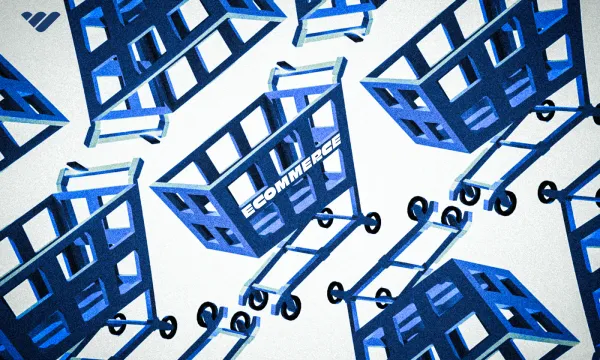

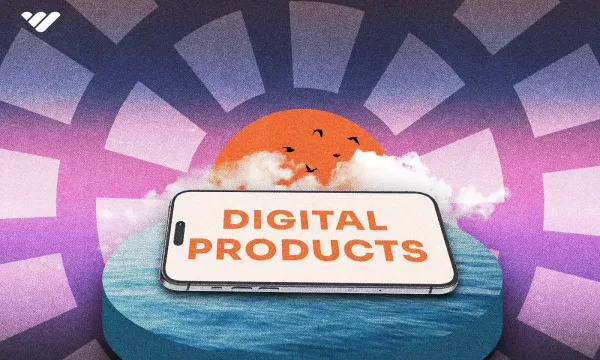
![Top 23 best dropshipping Discord Servers [July 2025]](/blog/content/images/size/w600/2024/02/Top-Dropshipping-Discord-Servers--1-.webp)
![Top 16 best ecommerce Discord servers [July 2025]](/blog/content/images/size/w600/2023/09/ecommerce-groups.webp)
